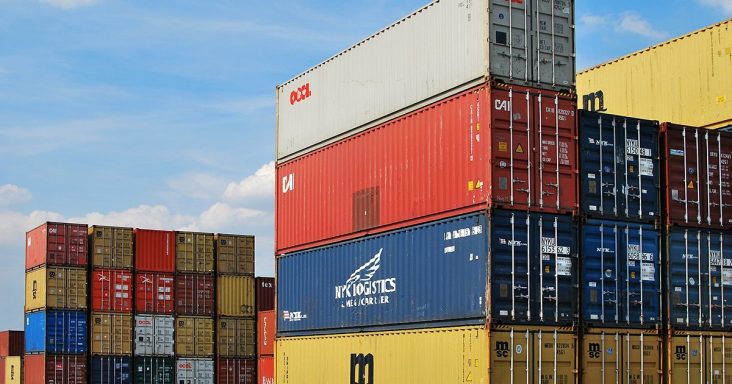Economic recovery leads to supply chain issues
by September 27, 2021 2:54 pm 1,087 views

A compressed economic recovery, following a two-month recession at the onset of the COVID-19 pandemic in spring 2020, has resulted in supply chain issues, and the stretched supply chains are contributing to inflation, an economist said.
In a recent webinar, Jim Meil, principal, industry analysis for ACT Research, said forecasting is about supply, not demand. He said demand is strong, while supply is the challenge.
Amid a semiconductor shortage, microprocessor prices are expected to rise 4% this year, and Meil said they typically decline annually. He said steel prices started the year at $650 and are about three times higher now at about $2,000 a metric ton. He noted lumber prices fell over the spring and summer. Also, he said data from the Institute for Supply Management, which releases monthly economic metrics on the manufacturing sector, show near-record slow deliveries and low customer inventories.
Tim Denoyer, vice president and senior analyst for ACT Research, expects strong GDP growth of about 6% for this year and next year. Inflation is projected at 3.8% this year and 2.5% in 2022. Denoyer said U.S. ports are experiencing the longest backlog of ocean container ships. The largest ports on the West Coast have run out of space to anchor, and some ships are adrift, said Denoyer, adding that he doesn’t expect the backlog to clear until after the holidays.
The majority of ocean freight is transported under contract; however, he said ocean spot rates are seven times higher than they were before the pandemic. Spot rates from China to the U.S. are about $20,000 per container, while exports from the U.S. to China are less than $1,000 per container. He noted that almost 60% of container ships are leaving U.S. ports empty. Over the past decade, the average was about 40% empty. So far this year, container imports are up about 15%, while container exports are down about 5%. He expects ocean shipping costs to rise in 2022.
Denoyer also said the chassis shortage is at least a six- to 12-month problem and is worsening. Overland carriers need chassis on which to transport containers from ports and rail yards. He said intermodal volumes are expected to be constrained, but the trucking industry has shown it has the capacity to make up for some of the affected rail volumes. He noted the industry has unseated capacity, or available trucks but no drivers to operate them. Hurricane Ida led to a temporary rise in spot rates, and he expects contract rates to rise in 2022.
“We think there will be a for-hire freight recession by the time we get to 2023 after an extraordinarily long cycle,” Denoyer noted.
Spot and contract freight rates rose to new highs in August as truck volumes increased, according to DAT Freight & Analytics. The national average spot rate for van loads rose 3 cents to $2.76 per mile in August, surpassing the previous high in July, according to DAT. The monthly average spot rate has risen 40 cents since January and is up 72 cents from August 2020. Meanwhile, the national average contract rate for van loads rose 5 cents to $2.81 per mile in August, from July.
“Shippers and logistics managers who would normally be gearing up for peak shipping season have encountered one test after another in terms of their ability to manage transportation pricing, capacity and supply chain disruptions,” said Ken Adamo, chief of analytics at DAT. “There’s no easy path through this freight environment.”
Kenny Vieth, president and senior analyst for ACT Research, said the industries that generate a lot of freight are growing, and demand for Class 8 trucks, the largest truck class, has been “as good as it gets.” The semiconductor shortage has affected truck production volumes, but as soon as supply loosens, Class 8 production is expected to “go vertical,” he added. Meil noted the chip shortage could last into 2022 or 2023.
American Trucking Associations’ advanced seasonally adjusted For-Hire Truck Tonnage Index increased 0.5% in August to 110.3, from 109.8 in July. The index fell 0.5% compared to August 2020. Between January and August, the index is down 0.2% from the same period in 2020.
“August’s monthly gain, while small, was the first since March,” said ATA Chief Economist Bob Costello. “It is important to remember that ATA’s tonnage data is dominated by for-hire contract freight, with a very limited amount of spot market freight. I continue to believe that tonnage has not recovered to pre-pandemic levels for two main reasons – broader supply chain issues, like semiconductor shortages, as well as industry-specific difficulties, including the driver shortage and lack of equipment.
“Despite some supply chain issues, demand remains strong for trucking services generally,” he added. “Truckload carriers are operating fewer trucks than a year earlier, which makes it difficult to increase freight volumes significantly.”
